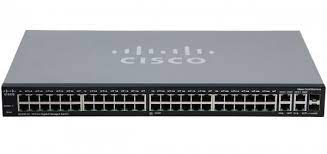THE OSI LAYERS
- Application Layer
- Presentation Layer
- Session Layer
- Transport Layer
- Network Layer
- Data Link Layer
- Physical Layer
The OSI Model can be seen as a universal language for computer networking. It is based on the concept of splitting up a communication system into seven abstract layers, each one stacked upon the last.
It ensures an application can effectively communicate with other applications on different computer systems and networks. The application layer is not an application. Instead, it is a component within an application that controls the communication method to other devices. It is an abstraction layer service that masks the rest of the application from the transmission process. The application layer relies on all the layers below it to complete its process. At this stage, the data or the application is presented in a visual form that the user can understand.
Presentation Layer is the 6th layer in the Open System Interconnection (OSI) model. This layer is also known as Translation layer, as this layer serves as a data translator for the network. The data which this layer receives from the Application Layer is extracted and manipulated here as per the required format to transmit over the network. The main responsibility of this layer is to provide or define the data format and encryption. The presentation layer is also called as Syntax layer since it is responsible for maintaining the proper syntax of the data which it either receives or transmits to other layer(s).
The OSI model divides the tasks involved with moving information between networked computers into seven smaller, more manageable task groups. Each of the seven OSI layers is assigned a task or group of tasks. The transport layer's tasks include error correction as well as segmenting and desegmenting data before and after it's transported across the network. This layer is also responsible for flow control and making sure that segmented data is delivered over the network in the correct sequence. Layer 4 (the transport layer) uses the transmission control protocol (TCP) & user data protocol (UDP) to carry out its tasks.
Network-to-network connections are what make the Internet possible. The "network layer" is the part of the Internet communications process where these connections occur, by sending packets of data back and forth between different networks. In the 7-layer OSI model (see below), the network layer is layer 3. The Internet Protocol (IP) is one of the main protocols used at this layer, along with several other protocols for routing, testing, and encryption.
The physical layer (also known as layer 1) deals with bit-level transmission between different devices and supports electrical or mechanical interfaces connecting to the physical medium for synchronized communication. This layer plays with most of the network’s physical connections—wireless transmission, cabling, cabling standards and types, connectors and types, network interface cards, and more —as per network requirements.











Comments
Post a Comment